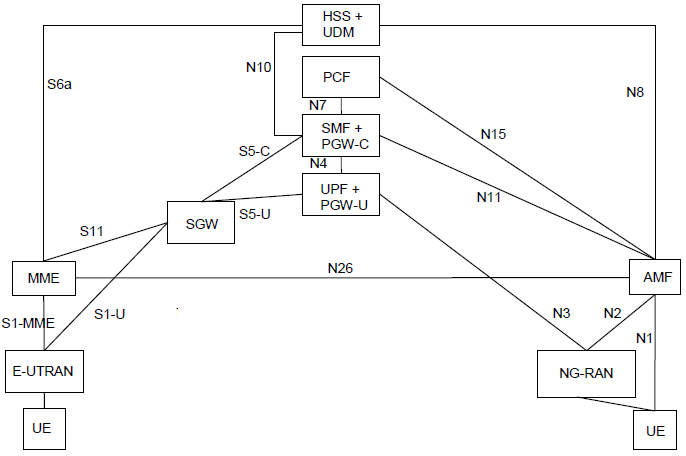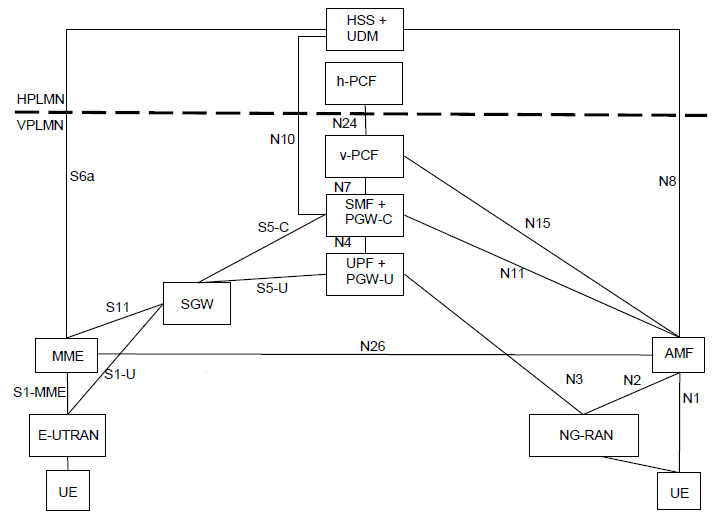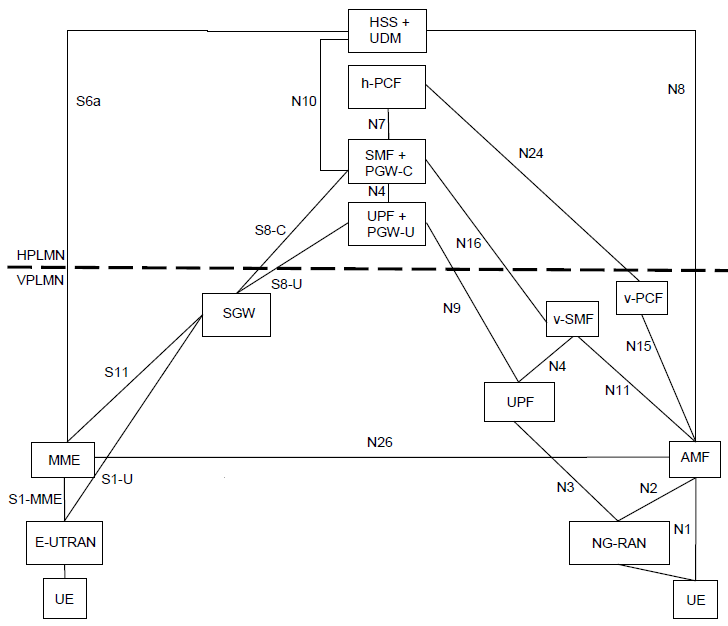|
|
||
|
N26 interface is an inter-CN(Core Network) interface between the MME and 5GS AMF in order to enable interworking between EPC and the NG core. Support of N26 interface in the network is optional for interworking.
Features of N26 InterfaceImporant features of N26 can be listed as below.
How to figure out N26 is supported ?As mentioned above, the support of N26 is optional (not mandatory). So there might be some mechanism for Network to inform UE on whether it support N26 or not. In addition, N26 is related both to LTE core (MME) and NR Core (AMF) meaning that there should be such a notification mechanism on both LTE and NR signaling procedure. In NR, this notification is done by Registration Accept message and in LTE it is done by Attach Accept message as indicated by following IE (Information Element) Interworking without N26 interface indicator (IWK N26) (octet 3, bit 7) This bit indicates whether interworking without N26 interface is supported Bit 7 0 ---> Interworking without N26 interface not supported : 1 ---> Interworking without N26 interface supported : < Example > Protocol discriminator = 0x7e (5GS Mobility Management) Security header = 0x2 (Integrity protected and ciphered) Auth code = 0xc93c7d52 Sequence number = 0x02 Protocol discriminator = 0x7e (5GS Mobility Management) Security header = 0x0 (Plain 5GS NAS message, not security protected) Message type = 0x42 (Registration accept) 5GS registration result = 0x09 (Emergency registered=0, NSSAA to be performed=0, SMS allowed=1, 3GPP access) ... 5GS network feature support: 0x03 (MPSI=0, IWK N26=0, EMF=not supported, EMC=not supported, IMS-VoPS-N3GPP=1, IMS-VoPS-3GPP=1) 0x00 (5G-UP CIoT=0, 5G-IPHC-CP CIoT=0, N3 data=0, 5G-CP CIoT=0, RestrictEC=both CE mode A and CE mode B are not restricted, MCSI=0, EMCN3=0) ... Interworking without N26 interface indicator (IWK N26) (octet 4, bit 7) This bit indicates whether the network supports interworking procedure without N26 interface. Bit 7 0 ---> Interworking without N26 not supported : 1 ---> Interworking without N26 supported :
< Example > Protocol discriminator = 0x7 (EPS Mobility Management) Security header = 0x2 (Integrity protected and ciphered) Auth code = 0xa585b8bd Sequence number = 0x01 Protocol discriminator = 0x7 (EPS Mobility Management) Security header = 0x0 (Plain NAS message, not security protected) Message type = 0x42 (Attach accept) EPS attach result = 1 (EPS only) .... EPS network feature support: 0x01 (CP CIoT=0, ERw/oPDN=0, ESRPS=0, CS-LCS=0, EPC-LCS=0, EMC BS=0, IMS VoPS=1) 0x08 (15 bearers=0, IWK N26=0, RestrictDCNR=0, RestrictEC=0, ePCO=1, HC-CP CIoT=0, S1-U data=0, UP CIoT=0) Single Registration Mode vs. Dual Registration ModeRegistration Mode refers to how a User Equipment (UE) manages its registration with the network. The registration mode determines the UE's ability to register with one or both of the 4G and 5G core networks simultaneously. There are two primary registration modes: Single Registration Mode:
Dual Registration Mode:
N26 Architectures
< 23.501 - Figure 4.3.1-1: Non-roaming architecture for interworking between 5GS and EPC/E-UTRAN >
< 23.501 - Figure 4.3.2-1: Local breakout roaming architecture for interworking between 5GS and EPC/E-UTRAN >
< 23.501 - Figure 4.3.2-2: Home-routed roaming architecture for interworking between 5GS and EPC/E-UTRAN >
Reference
|
||


